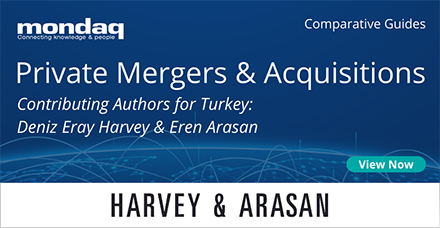
In M&A transactions, it is common for buyers and sellers to struggle to agree on the company’s valuation. This is particularly the case for early-stage technology companies, where different valuation methods and approaches, diverging growth projections, and the lack of comparable transactions can significantly widen the gap between the parties’ expectations.
One method frequently used in recent years to bridge this gap is the earn-out mechanism. Under an earn-out arrangement, payment of a portion of the purchase price is deferred until after closing and becomes conditional upon the fulfilment of specific criteria.
Advantages and Risks
If the buyer believes that the company will only reach a higher valuation once certain conditions are met, the earn-out allows them to avoid making an upfront payment for this potential, yet uncertain, value. The seller, on the other hand, retains the opportunity to secure a higher price if the earn-out conditions are satisfied, rather than settling for a lower fixed amount. Where the seller remains in a managerial position after closing, the mechanism also provides an incentive to enhance the company’s performance.
That said, the earn-out also carries risks. The most significant is the potential for disputes over whether the conditions have been fulfilled. To minimise such risks, the criteria must be defined with absolute clarity, leaving no room for interpretation.
Determining the Conditions
The earn-out is tied to the achievement of certain post-closing conditions. These may include financial performance targets within a set period, or operational milestones such as winning a tender or launching a new product. For instance, in the US pharmaceutical sector, earn-out payments have often been linked to obtaining regulatory approval for the launch of a new drug.
The earn-out period is typically set between one and three years, with an average of two years.
Obligations of the Parties
For sellers to become entitled to the earn-out payment, the agreed conditions must be met. Accordingly, sellers usually require buyers to provide certain undertakings after closing in order to mitigate risks that might prevent the conditions from being achieved. These undertakings generally include:
- Managing the company consistently with past practices,
- Making reasonable efforts to meet the earn-out conditions,
- Not disposing of significant assets,
- Refraining from bad faith actions that could prevent fulfilment of the conditions.
Sellers also need to be able to monitor whether the conditions are being achieved. For this reason, share purchase agreements often impose obligations on buyers to report regularly to the sellers throughout the earn-out period.
Buyers, on the other hand, generally wish to exercise discretion over the company once acquired. If the target becomes part of a wider group post-closing, the buyer will often seek to align the target’s practices with those of the group.
Finding a balance acceptable to both parties is therefore crucial during negotiations. To avoid the delicate balance being disrupted by changing market conditions or shifting business priorities, it is advisable not to set the earn-out period too long.
Another key negotiation point concerns the scope and limits of the buyer’s obligations to ensure the conditions are met. Is the buyer only required to use reasonable efforts, or must they also commit to further investment, R&D, or marketing activities? As this question will be answered within the share purchase agreement, the boundaries of the buyer’s obligations should be defined clearly to reduce the risk of disputes.
Conclusion
The earn-out mechanism can be a valuable tool to keep a deal alive where the parties would otherwise fail to reach an agreement or walk away from the transaction altogether. This explains its increasing popularity in recent years. However, where the buyer and seller are able to agree on valuation and the purchase price upfront, it is often simpler to avoid an earn-out arrangement and to make full payment at closing.



